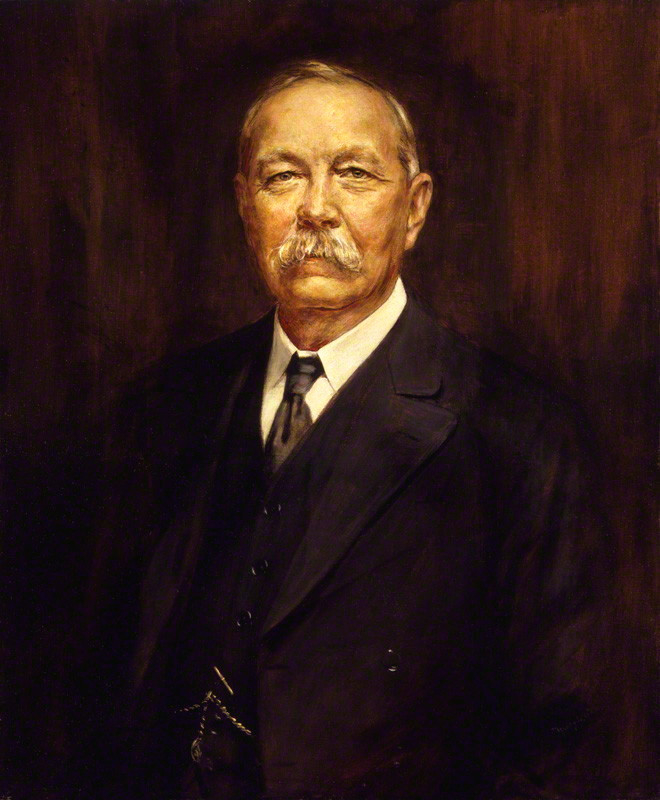Sir Arthur Ignatius Conan Doyle
Sir Arthur Ignatius Conan Doyle KStJ DL was a British writer and physician who lived from May 22, 1859, to July 7, 1930. In 1887, for A Study in Scarlet, the first of four books and fifty-six short tales about Holmes and Dr. Watson, he invented the character Sherlock Holmes. In the realm of crime fiction, the Sherlock Holmes stories are considered classics. Doyle married Louisa (often referred to as "Touie") Hawkins (1857–1906) in 1885. She was the younger sister of one of Doyle's patients and the youngest daughter of J. Hawkins of Minsterworth, Gloucestershire. Louisa was afflicted with TB. He married Jean Elizabeth Leckie (1874–1940) in 1907, a year after Louisa's death. He had met and fallen in love with Jean in 1897, but had had a platonic connection with her out of loyalty to his former wife.
Other than Holmes stories, Doyle wrote fantasy and science fiction stories about Professor Challenger and comedic stories about Napoleonic soldier Brigadier Gerard, as well as plays, romances, poetry, non-fiction, and historical novels. The mystery of the Mary Celeste was popularized because of one of Doyle's early short stories, "J. Habakuk Jephson's Statement" (1884). Doyle had a hard time finding a publisher. A Study in Scarlet, Doyle's first work featuring Sherlock Holmes and Dr. Watson, was written in three weeks when he was 27 and accepted for publication by Ward Lock & Co on November 20, 1886, in exchange for all rights to the narrative for £25 (equal to £2,900 in 2019).
Sherlock Holmes is a fictional detective created by Sir Arthur Conan Doyle, who refers to himself as a "consulting detective" in the stories. Holmes is known for his extraordinary abilities in observation, deduction, forensic science, and logical reasoning, which he employs when investigating cases for a variety of clients, including Scotland Yard.












